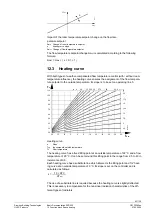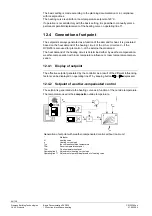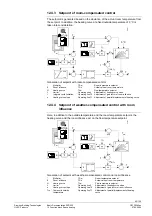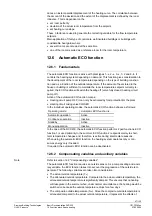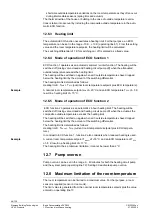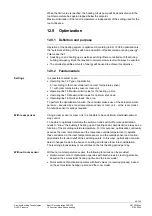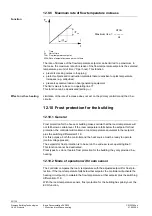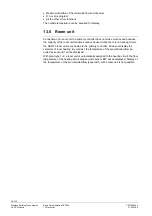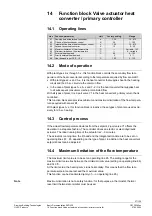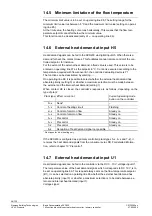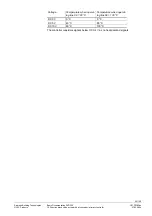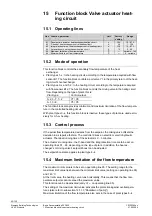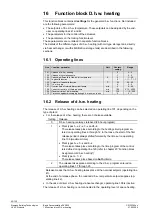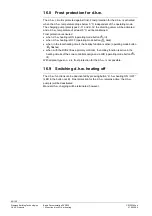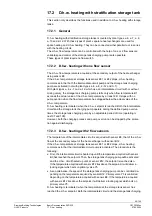
54/130
Siemens Building Technologies
Basic Documentation RVD230
CE1P2383en
HVAC Products
13 Precontrol
27.05.2004
13 Precontrol
13.1 General
The RVD230 can be configured as a primary controller. Primary controller plant types
are 5–x, 6–x and 7–2. The other plant types do not control their flow temperature ac-
cording to the heat demand signals they receive via LPB because their controllers are
configured as consumers.
13.2 Heat
demand
The consumers (zone controllers, d.h.w. circuits) connected to the flow of the primary
controller
in the same segment
deliver their heat demand signals via LPB to the pri-
mary controller. For this reason, it must be given address 1!
The heat demand signal can also be fed to the controller via input H5 or input U1.
13.3 Control
The primary controller operates based on the segment’s effective heat demand; it
adopts the highest setpoint (maximum selection) as the control setpoint. The controlled
temperature is that of the precontrolled flow acquired with sensor B1; the controlled
actuating device is Y1 in the primary return.
13.4 Pump Q1
Pump Q1 is configured as a system pump and runs as soon as a local consumer (d.h.w
circuit, heating circuit with plant type 7–2) or an assigned zone calls for heat. Speed
control of that pump is not possible.
13.5 Pump and mixing valve overrun
If, during overrun, there is a sudden reduction of the demand for heat, the heat con-
verter generates a forced signal to avoid the accumulation of heat. In segment 0, it is
passed to all devices in all segments; in segments 1…14, it is delivered to all devices in
the own segment.
Consumers (heating circuits, d.h.w. circuits) and heat converters respond to forced
signals
during overrun
(bus or / and internally) as follows:
•
If there is no forced signal, the consumers / heat converters perform normal pump
overrun in agreement with the set overrun time (also refer to sections 12.7 for the heat-
ing circuit pump and 16.7 for the d.h.w. pump)
•
If a forced signal is received, the loads continue to draw heat from the heat source in
the following manner:
−
In mixing circuits, the previous setpoint is maintained; during overrun, that setpoint
appears on the display
−
In pump circuits, the pump continues to run. If, at the same time, an internal pump
overrun is called for, a maximum selection of the 2 overrun times is made; in that
case, the longer overrun time applies




